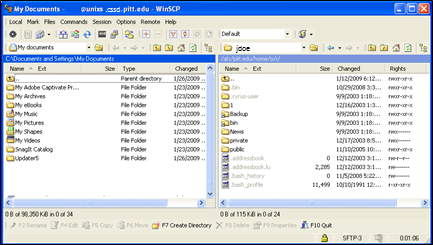You can use PuTTY to establish an SSH connection to the Linux Timesharing Service. A program called WinSCP can be used to establish an SFTP connection. This section explains how to connect to the Linux Timesharing Service with these two programs.
Using PuTTY as an SSH Client
1. If you do not already have PuTTY installed on your Windows computer, open a web browser to http://www.chiark.greenend.org.uk/~sgtatham/putty/download.html. Right click the putty.exe file in the Binaries section and save the file to your desktop.
2. Double-click the PuTTY icon on your desktop to launch it.

3. You may get a security warning pop-up window asking if you want to run the software. If you do, click Run.
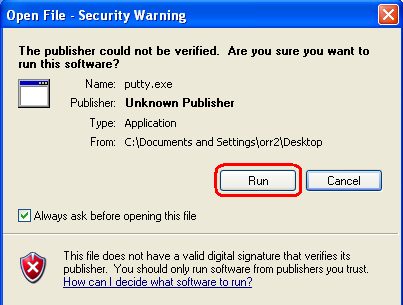
The PuTTY Configuration window will display. In the Host name field, type linux-ts.it.pitt.edu. Make sure SSH is selected as the Connection type. Enter Linux Timesharing under Saved Sessions and click Save. This will save your settings so you do not have to enter them each time you log in.
Note: After May 2023, the following host names associated with the Solaris-based Unix Timesharing Service will no longer work: unixs.cssd.pitt.edu, unix.cssd.pitt.edu, unixs1.cis.pitt.edu, and unixs.cis.pitt.edu.
4. Click the Linux Timesharing option and click Load. This will load your saved session. Next, click Open.
Note: The next time that you use PuTTY, you can simply Load and Open your Saved Session. You do not have to enter the Host Name each time.
5. The first time that you connect from your computer to a given host, you will see a security alert window like the one below. If the host fingerprint shown in the window matches the fingerprints listed under Connecting for the First Time, click Yes to accept the host key. Otherwise, click No or Cancel. This warning should not display again.
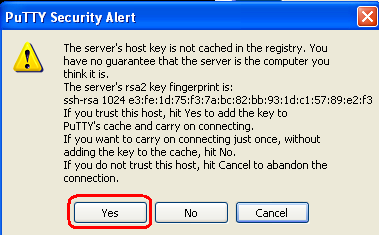
6. Type your University Computing Account username and press the Enter key. Next, type your University Computing Account password and press the Enter key.

7. The Linux Timesharing Service login window will display. You are now securely connected.
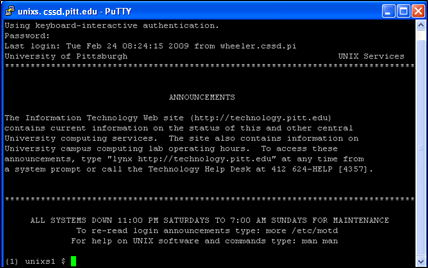
Installing WinSCP for SFTP
1. Open a web browser to http://winscp.net/eng/download.php. Click the Installation package link in the Downloading WinSCP section.
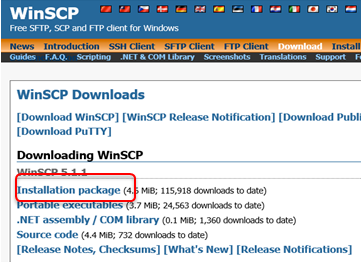
Your download should start automatically (Note: If it does not, click the Direct Download link on the page).
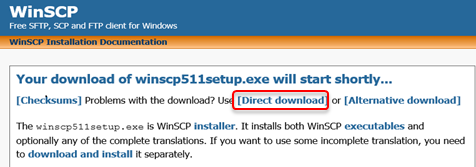
2. A pop-up window will ask if you want to run or save the application. Click Run.

3. Click Yes in the User Account Control pop-up that appears.
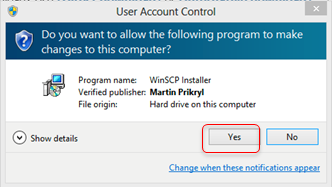
4. A security warning may display asking if you want to run the software. Click Run.
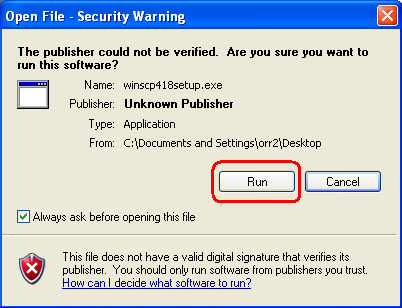
5. Select the language for the installation and click OK. The WinSCP Setup Wizard will display. Click Next.
6. Read the license agreement and click Next.
7. Select Typical installation and click Next.
8. Select Norton Commander Interface as the interface style and click Next.
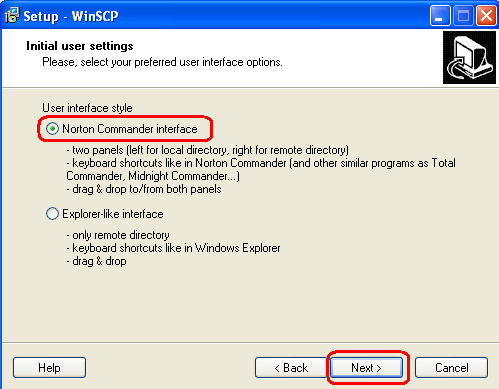
9. Click Install to begin the installation process.
10. When the installation has been completed, click the Finish button.
Using WinSCP for SFTP
1. Double-click the WinSCP icon on your desktop to open the program.

The WinSCP Login window will display. Enter linux-ts.it.pitt.edu in the Host name field. Enter your University Computing Account username and password where prompted. Leave the Port number set to 22. Ensure that the File protocol is set to SFTP and click Save.
Note: After May 2023, the following host names associated with the Solaris-based Unix Timesharing Service will no longer work: unixs.cssd.pitt.edu, unix.cssd.pitt.edu, unixs1.cis.pitt.edu, and unixs.cis.pitt.edu.
2. Enter a name for your saved session (for example, Linux Timesharing) and click OK.
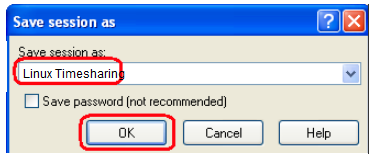
3. Select your Unix Timesharing session and click Login.
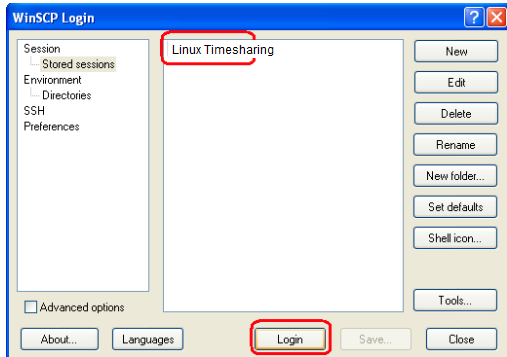
Note: The next time that you use WinSCP, you can simply select your stored session and click Login. You do not have to enter the Host Name each time.
4. The first time that you connect from your computer to a given host, you will see a security alert window like the one below. If the host fingerprint shown in the window matches the fingerprints listed under Connecting for the First Time, click Yes to accept the host key. Otherwise, click No or Cancel. This warning should not display again.

5. You are now securely connected to the Linux Timesharing Service. You can copy files back and forth between your computer (left side of window) and the remote system (right side of window).
